Fiber Polymer Trim
WAMBAUGH; Douglas J.
U.S. patent application number 16/793474 was filed with the patent office on 2020-06-11 for fiber polymer trim. The applicant listed for this patent is CERTAINTEED GYPSUM AND CEILING MANUFACTURING INC.. Invention is credited to Douglas J. WAMBAUGH.
| Application Number | 20200181921 16/793474 |
| Document ID | / |
| Family ID | 56895991 |
| Filed Date | 2020-06-11 |
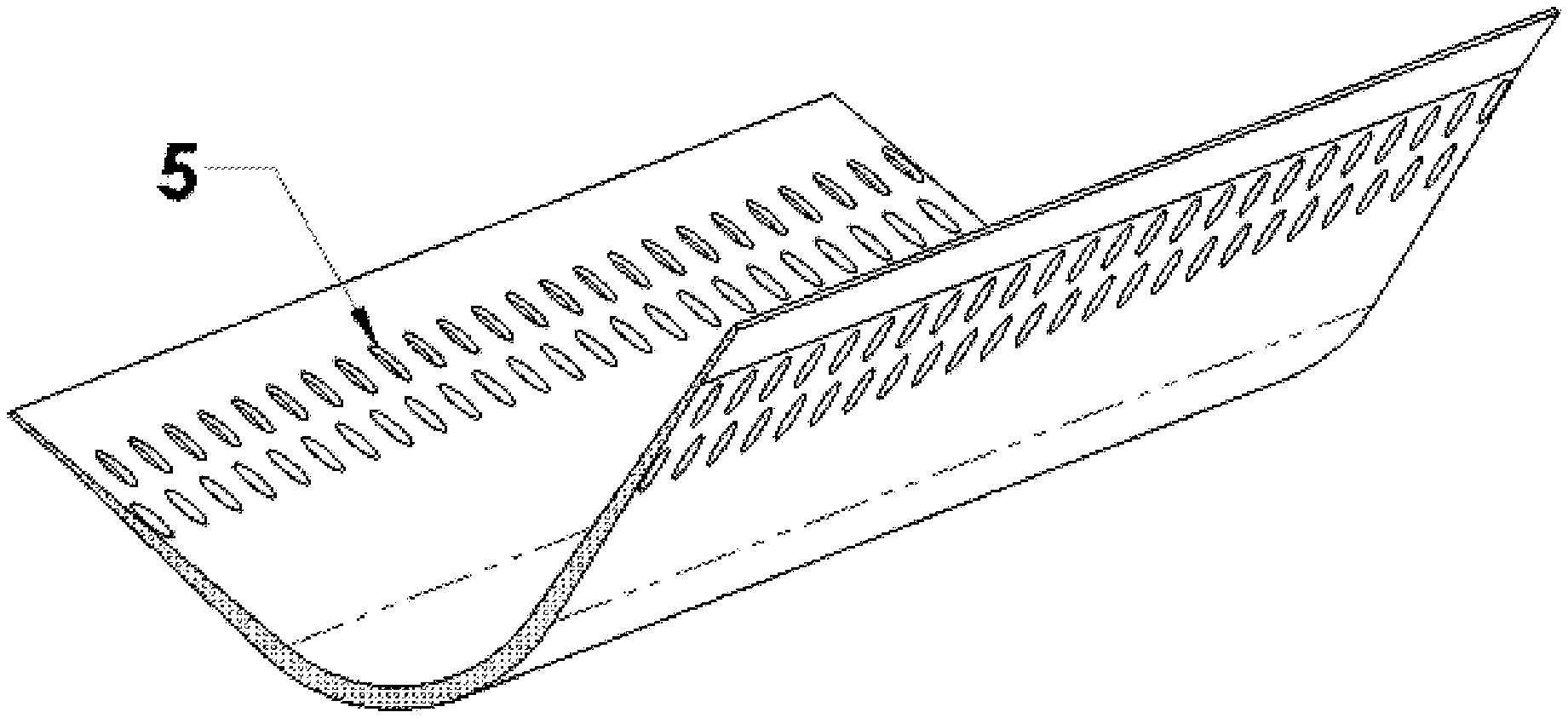


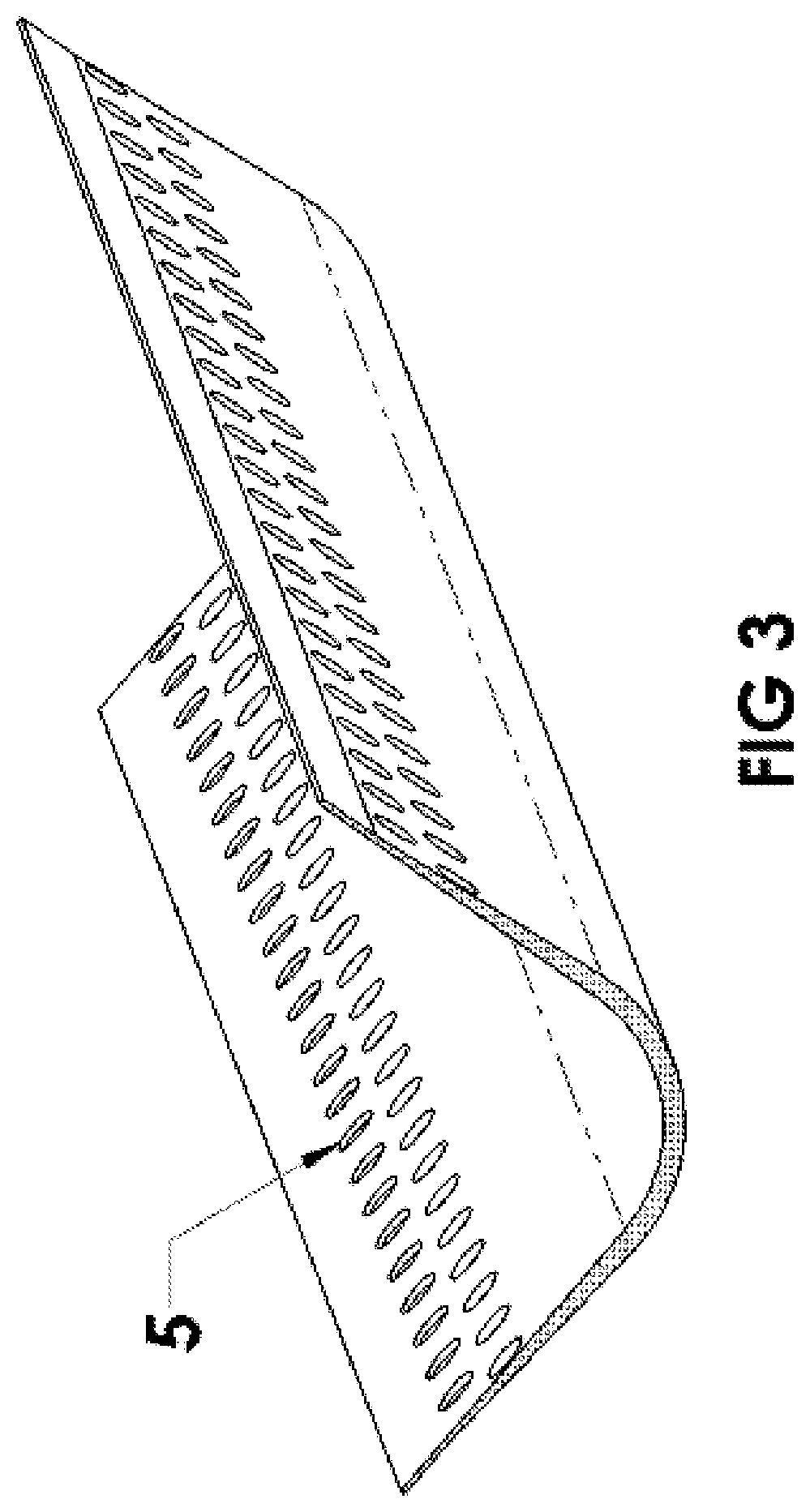
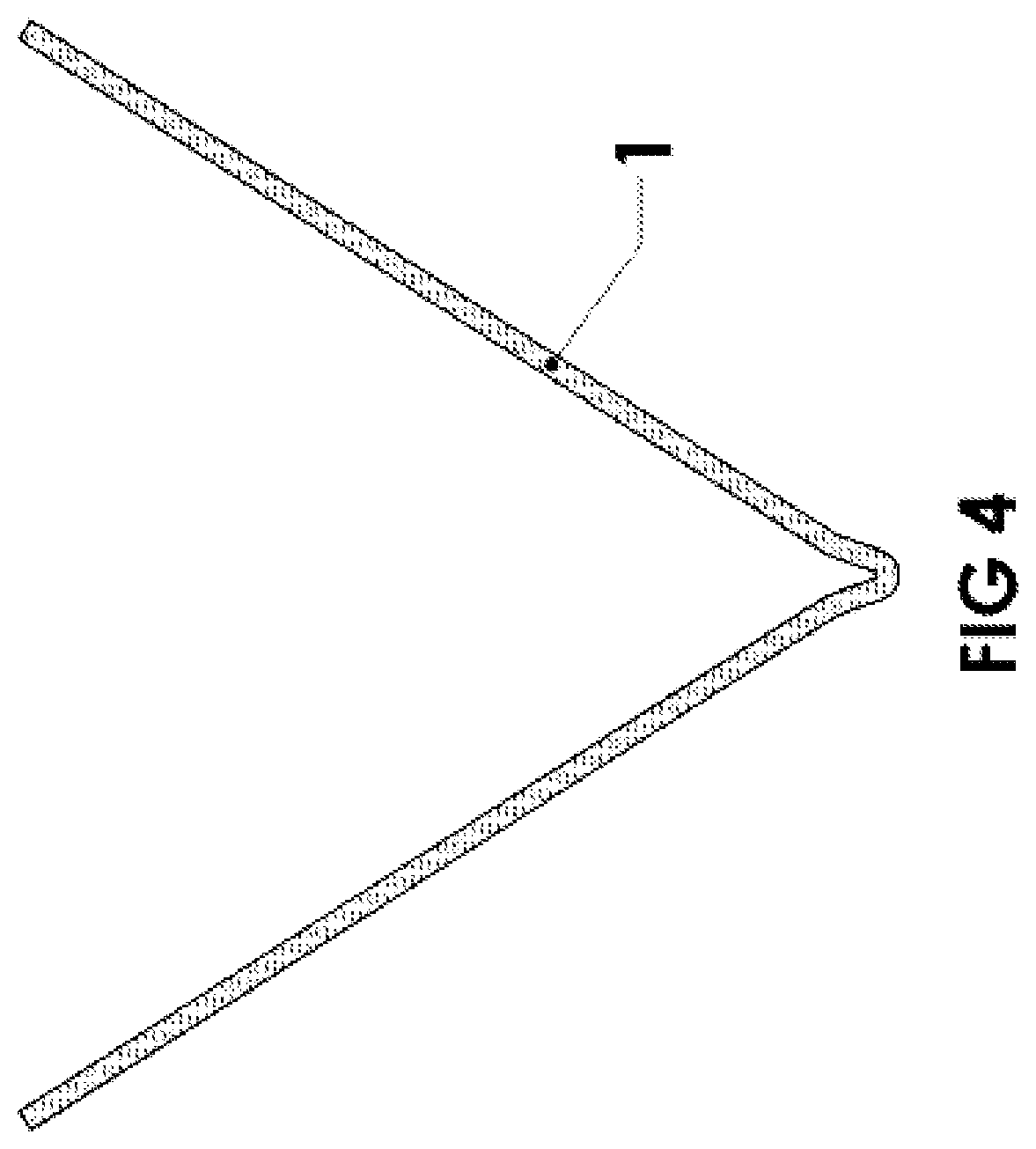
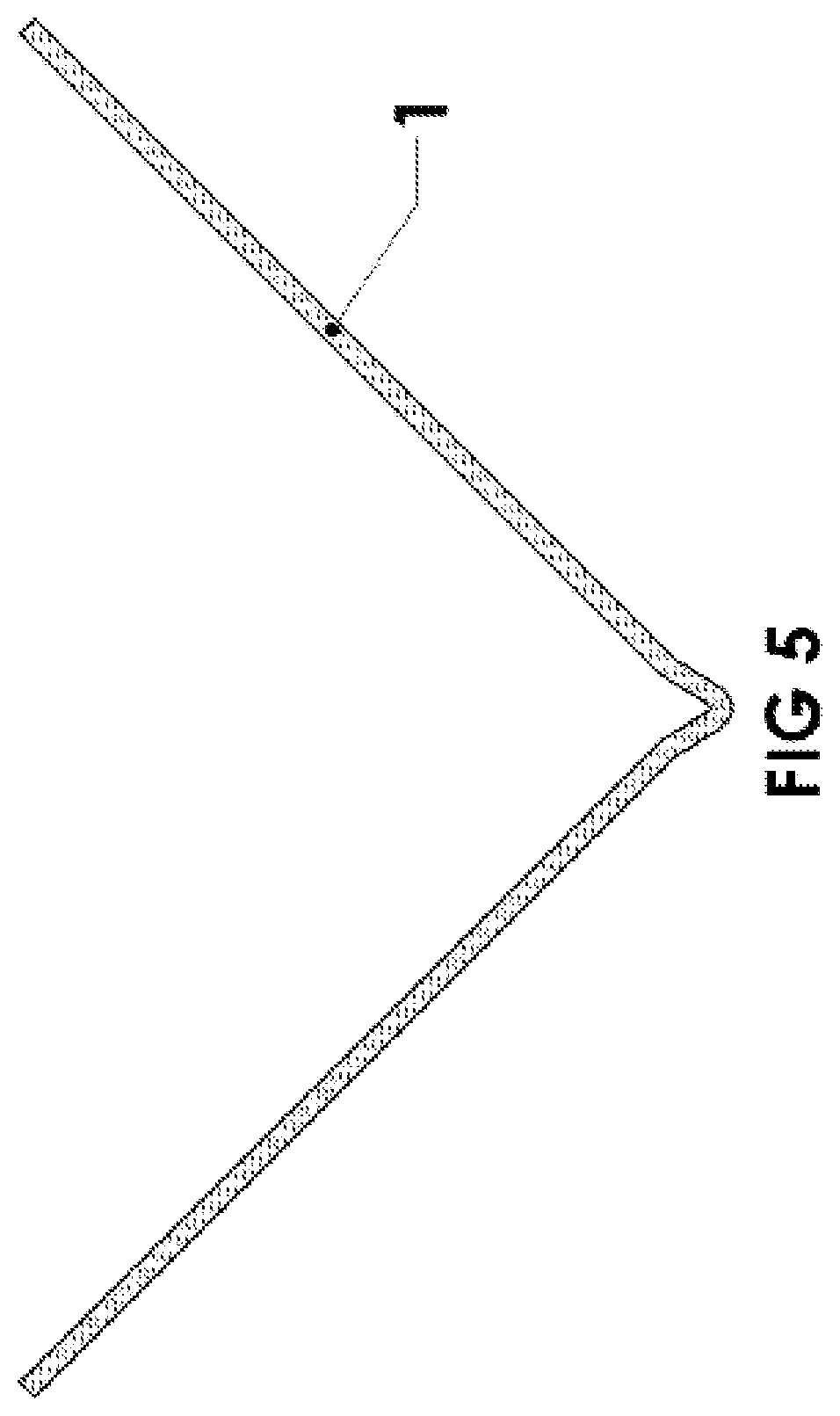
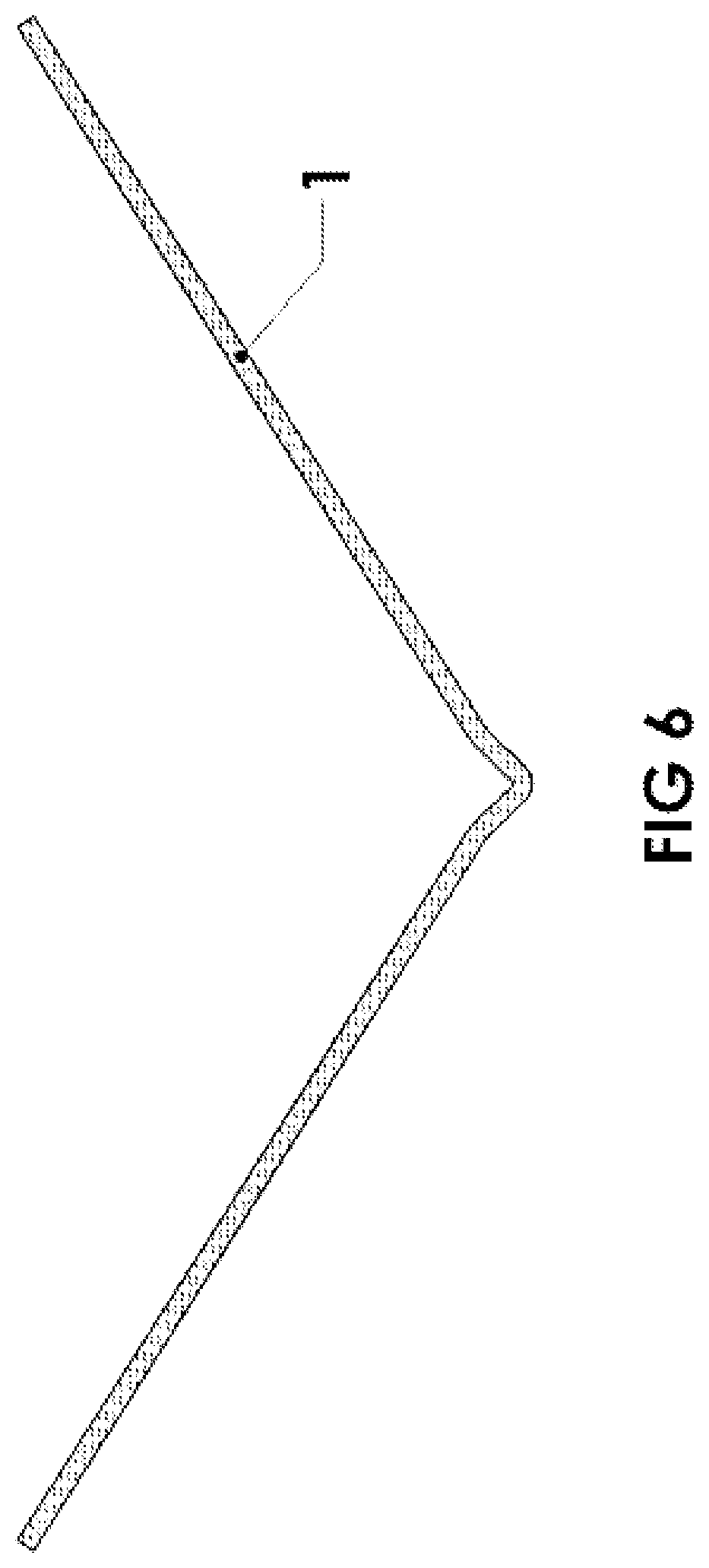
| United States Patent Application | 20200181921 |
| Kind Code | A1 |
| WAMBAUGH; Douglas J. | June 11, 2020 |
FIBER POLYMER TRIM
Abstract
A corner trim material that is made of a material that will bond with current industry mastics such as all purpose joint compounds, resists impact, resists abrasion, and readily accepts common coatings such as drywall mud, texture and paints. The surface of this material generally does not need to be covered by any secondary fiber based material such as paper to improve bonding or coating on the inside or outside. The material generally consists of a polymer mixed with a fibrous material like pulp or glass fiber. A corner trim piece can be directly extruded from the mix. The corner trim piece can have a center hinge, can be bullnose, and the flanges can optionally have holes or optionally be coated with adhesive.
| Inventors: | WAMBAUGH; Douglas J.; (Bend, OR) | ||||||||||
| Applicant: |
|
||||||||||
|---|---|---|---|---|---|---|---|---|---|---|---|
| Family ID: | 56895991 | ||||||||||
| Appl. No.: | 16/793474 | ||||||||||
| Filed: | February 18, 2020 |
Related U.S. Patent Documents
| Application Number | Filing Date | Patent Number | ||
|---|---|---|---|---|
| 16155236 | Oct 9, 2018 | 10604943 | ||
| 16793474 | ||||
| 15246377 | Aug 24, 2016 | 10100528 | ||
| 16155236 | ||||
| 13476628 | May 21, 2012 | 9446546 | ||
| 15246377 | ||||
| 12569188 | Sep 29, 2009 | |||
| 13476628 | ||||
| 61194869 | Oct 1, 2008 | |||
| Current U.S. Class: | 1/1 |
| Current CPC Class: | E04F 13/068 20130101; B29L 2031/10 20130101; E04F 2013/063 20130101; B29B 7/34 20130101; B29C 48/00 20190201; B29C 48/022 20190201; B29K 2223/065 20130101; B29C 48/16 20190201; B29C 48/0022 20190201; B29K 2055/02 20130101; B29C 48/2886 20190201; B29K 2067/003 20130101; B29C 48/12 20190201 |
| International Class: | E04F 13/06 20060101 E04F013/06; B29C 48/285 20060101 B29C048/285; B29C 48/00 20060101 B29C048/00; B29C 48/16 20060101 B29C048/16 |
Claims
1. A drywall corner trim piece, comprising: a substantially uniform profile having a radiused center section and a tapered flange extending from each end of the radiused center section; wherein the drywall corner trim piece is formed from an extruded composite material comprising at least one polymer and at least one fibrous material.
2. The drywall corner trim piece of claim 1, wherein the radiused center section comprises a groove running the length of the corner trim piece that functions as a hinge.
3. The drywall corner trim piece of claim 1, wherein the radiused center section comprises a bullnosed center section.
4. The drywall corner trim piece of claim 1, further comprising: a plurality of holes disposed through each of the flanges.
5. The drywall corner trim piece of claim 4, wherein the radiused center section is free of holes.
6. The drywall corner trim piece of claim 1, wherein the drywall corner trim piece is extruded at a predetermined manufactured angle.
7. The drywall corner trim piece of claim 1, wherein the predetermined manufactured angle is substantially 90 degrees.
8. The drywall corner trim piece of claim 1, wherein the drywall corner trim piece is extruded in a substantially flat configuration and configured to be flexed about a corner formed between at least two drywall surfaces.
9. The drywall corner trim piece of claim 1, wherein the drywall corner trim piece is configured for finishing an outer corner formed between at least two drywall surfaces.
10. The drywall corner trim piece of claim 1, wherein the drywall corner trim piece is configured for finishing an inner corner formed between at least two drywall surfaces.
11. The drywall corner trim piece of claim 1, wherein the drywall corner trim piece reduces an amount of finishing compound required to blend the corner trim piece to a smooth wall appearance between at least two drywall surfaces.
12. The drywall corner trim piece of claim 1, wherein the extruded composite material is configured to maintain strength and flexural characteristics of the base polymer while adding a porous nature of the fibrous material.
13. The drywall corner trim piece of claim 12, wherein the drywall corner trim piece is configured to bond with drywall finishing compound without any secondary fiber based material.
14. The drywall corner trim piece of claim 1, wherein the at least one polymer comprises High Density Polyethylene (HDPE), Polyethylene Terephthalate (PET), or Acrylonitrile Butadiene Styrene (ABS).
15. The drywall corner trim piece of claim 1, wherein the at least one fibrous material comprises pulp, wood, paper, glass fibers, or a combination thereof.
16. The drywall corner trim piece of claim 1, wherein the drywall corner trim piece is suitable for finishing an interior corner of a structure and an exterior corner of a structure.
17. A method of forming a drywall corner trim piece, comprising: mixing a base polymer and a fibrous material at a temperature sufficient to melt the base polymer and the fibrous material into a contiguous composite material mix; and extruding a corner trim piece from the contiguous composite material mix, wherein the corner trim piece comprises substantially co-planar flanges joined at a centerline in a substantially flat configuration.
18. The method of claim 17, further comprising: tapering the flanges from a thicker section at the centerline to a thinner section at distal edges of the flanges away from the centerline.
19. The method of claim 17, further comprising: cutting holes in the flanges, wherein the holes are configured to increase bond strength between the flanges and at least two drywall surfaces.
20. The method of claim 17, further comprising: flexing the corner trim piece about a corner formed between at least two drywall surfaces; and applying a finishing compound to the flanges, wherein the corner trim piece reduces an amount of finishing compound required to blend the corner trim piece to a smooth wall appearance between the at least two surfaces.
Description
CROSS-REFERENCE TO RELATED APPLICATION(S)
[0001] This application is a continuation of and claims priority to U.S. patent application Ser. No. 16/155,236, entitled "FIBER POLYMER TRIM," by Douglas J. WAMBAUGH, filed Oct. 9, 2018, which is a divisional of and claims priority to U.S. patent application Ser. No. 15/246,377, entitled "FIBER POLYMER TRIM," by Douglas J. WAMBAUGH, filed Aug. 24, 2016, now U.S. Pat. No. 10,100,528, which is a divisional of and claims priority to U.S. patent application Ser. No. 13/476,628, entitled "FIBER POLYMER TRIM," by Douglas J. WAMBAUGH, filed May 21, 2012, now U.S. Pat. No. 9,446,546, which is a continuation of and claims priority to U.S. patent application Ser. No. 12/569,188, entitled "FIBER POLYMER TRIM," by Douglas J. WAMBAUGH, filed Sep. 29, 2009, which claims priority to U.S. Provisional Application No. 61/194,869, entitled "FIBER POLYMER TRIM," by Douglas J. WAMBAUGH, filed Oct. 1, 2008, all of which are assigned to the current assignee hereof and incorporated herein by reference in their entireties.
BACKGROUND
Field of the Invention
[0002] The present invention relates generally to the field of drywall corner trim and more particularly to a fiber polymer trim.
Description of the Art
[0003] Various types of drywall corner trim finishing materials are available for use today and are well known in the art. Some have been around for many years. The simplest of these materials is the metal bead. This is a completely metal bead that is formed such that it can be mechanically screwed, nailed, stapled, crimped or otherwise mechanically attached to the wall and enough joint compound is used to cover the attaching hardware and blend it into a smooth transition to the flat wall. Another type of metal material is paper faced metal. The paper on this material aids in bonding mud, texture and paint to the finished corner. This material may be intended to be mudded onto the corner without using screws but it is subject to the same problems as metal bead. The metal material of this product does not bond with mud and is easily damaged by moderate impacts or even slight frame shifting both of which cause denting, cracks and delimitation along the corner.
[0004] Another family of products is vinyl or other plastic pieces that are sometimes covered with paper. These products are subject to the same problems as metal beads because, like metal, they do not take coatings well. Mud, texture and paints do not adhere to the surface of these materials. They do not dent like metal, but when impacted the mud, texture and paints will flake off the surface because of a poor bond. As stated, paper layers are sometimes added to the construction, as with metal, to try to improve on these problems.
[0005] Finally, there is a paper, polymer, paper lamination product family. These products are the highest quality of their type and functionally have the best characteristics. They are rigid yet flexible and impact resistant. They bond very well with joint compound forming a structural corner. The outer and inner layers are covered with fibrous materials, usually paper, that bond very well with mud, textures, paints and the like. They can also be shaped and tapered and generally require very little mud to finish out
[0006] However, what is badly needed is a corner trim product line made from a material that is rigid like metal and impact resistant like plastic, while also being abrasion resistant. It should have all the beneficial surface properties of a fiber layer that will bond well with common joint compounds, textures, paints or other coatings common in the industry and form a structural bond to the sheet rock. It should be able to be mudded, glued or nailed, screwed or stapled to any corner during installation.
SUMMARY OF THE INVENTION
[0007] The present invention relates to a corner trim material that is made of a material that will bond with current industry mastics such as all purpose joint compounds, resists impact, resists abrasion, and readily accepts common coatings such as drywall mud, texture and paints. The surface of this material generally does not need to be covered by any secondary fiber based material such as paper to improve bonding or coating on the inside or outside. The material generally consists of a polymer mixed with a fibrous material like pulp or glass fiber. A corner trim piece can be directly extruded from the mix. The corner trim piece can have a center hinge, can be bullnose, and the flanges can optionally have holes or optionally be coated with adhesive.
DESCRIPTION OF THE FIGURES
[0008] Attention is now drawn to several illustrations of the features of the present invention:
[0009] FIG. 1 shows one possible profile of an extruded shape made of this composite material that could be used for covering outside 90 degree corners on a sheet rocked wall.
[0010] FIG. 2 shows another possible profile of an extruded shape made of this composite material.
[0011] FIG. 3 shows the embodiment of FIG. 2 but with the addition of holes punched through the flange on both sides along the length of the product.
[0012] FIG. 4 shows another possible profile of an extruded shape made of this composite material.
[0013] FIG. 5 shows the embodiment of FIG. 4 buy shown at an "as-manufactured" angle of 90 degrees and un-flexed.
[0014] FIG. 6 shows the embodiment of FIG. 4, but it is shown flexed to an angle greater than an "as-manufactured" angle of 90 degrees.
[0015] Several illustrations and drawings have been presented to aid in understanding the present invention. The scope of the present invention is not limited to what is shown in the Figures.
DESCRIPTION OF THE INVENTION
[0016] The present invention relates generally to the field of drywall corner trim products and more particularly to a corner trim material that is made of a material that will bond with current industry mastics such as all purpose joint compounds, will resist impact, will resist abrasion, and will readily accept common coatings such as drywall mud, texture and paints. The surface of this material generally does not need to be covered by any secondary fiber based material such as paper to improve bonding or coating on the inside or outside.
[0017] More particularly, the present invention relates to a corner trim product made of a material that is inexpensive, commonly available, incorporates the beneficial characteristics of a polymer such as strength and flexibility which yields impact resistance, and an ability to flex or hinge, the beneficial characteristics of paper exterior, such as bonding well to mastics commonly used in the industry, and being easily coated with textures and paints, and strength approaching that of metal. It can also withstand abrasion from various finishing processes such as sanding.
[0018] Materials that have these characteristics can be a blend of, or separate components of, wood, or pulp fibers, fiber glass and a polymer such as High Density Polyethylene (HDPE), Polyethylene Terephthalate (PET) or Acrylonitrile Butadiene Styrene (ABS). Any suitable plastic or polymer is within the scope of the present invention. Each of these separate materials are already common for use as wood alternative materials for decking or other outside construction such as picnic benches and the like. Making a drywall corner trim out a mixture of wood and a polymer is one embodiment of the present invention.
[0019] This material can be extruded into any profiled shape for various corner trim product characteristics. Some of these characteristics can include two adjacent flanges attached at a common edge forming the apex of some predetermined angle between said flanges, like on current outside 90 corner trims known in the art. Alternatively, the flanges can be joined by a large radius bull nose running longitudinally along the center line of the trim, like bullnose products known in the art. Each flange can have an inside surface for mating to the sheet rocked wall and an outside surface for feathering with mud and/or finishing with texture, paints or other common wall finishes. The inside and outside surface of each flange can be parallel forming a flange of constant thickness, be tapered from the apex of a solid inside or outside 90 degree corner trim product, or be tapered from the end of the radius of a Bullnose product to the outside edge of the flange furthest away from the said apex or radius. The apex can be formed by a thin groove running longitudinally along the centerline of the trim piece creating a hinge feature that allows the product to flex to any angle of corner being finished.
[0020] A corner trim material made of this material can be manufactured into any shape and can replace all constructions that today's corner trim materials are available in. In particular, it can replace paper faced metal, vinyl, paper-plastic, paper-plastic-paper or any of the other types of corner trim or other bead assembly constructions on the market today with a single composite material product. An optional adhesive layer can be added to the inside (wall side) of this material to create a permanent, strong and fast bond to the corner.
[0021] A particular material that includes all these beneficial properties without the negative properties of many existing products is a blend of fibers or other filler (such as pulp or wood, foaming agents, or absorbent polymers) to make the final material porous so it will accept coatings, and a polymer such as High Density Polyethylene (HDPE) to give the material strength, impact resistance and flexibility.
[0022] This mix of materials can be extruded and/or rolled, or otherwise shaped in one or more operations into any profile to match any drywall corner trim shape currently available in the drywall corner trim industry, or a new shape to achieve a particular benefit or function. An optional adhesive layer may added to the inside (or wall side) of the profile to aid in bonding the trim piece onto the drywall corner rapidly and easily.
[0023] The materials used in this product are generally common in the building industry but usage is so far limited to decking, railing, trim and other extruded shapes. Sometimes they are used in furniture molding or picnic bench materials or other outside use. Another benefit of this material is that it can often be made completely out of recycled materials. The exact type of polymer, and the exact fiber/ filler to attain bonding properties, can be changed get the best property mix and are not limited to current materials or technologies. Any material with these properties is within the scope of the present invention.
[0024] Turning to FIG. 1, a possible profile of an extruded shape made of this composite material (1) that can be used for covering outside 90 degree corners on a sheet rocked wall can be seen. This profile can include a taper (4) to help minimize the amount of mud required to finish the corner installation in preparation for painting or other cosmetic cover. This profile incorporates a groove (3) running the length of the trim piece which may function as a hinge or flex point. Also shown is an optional adhesive (2) on the inside (wall side) of the corner trim material. If the material naturally adheres to mastics commonly used in the industry such as drywall finishing compound (mud), this adhesive may not be needed.
[0025] FIG. 2 shows another possible profile of an extruded shape made from this composite material (1) that can be used for covering outside, bullnose corners on a sheet rocked wall. This profile can include a taper (4) to minimize the amount of mud required to finish the corner, but the taper is not required. Any bullnose radius, indeed any shape, could be formed to perform the function of finishing drywall corners.
[0026] FIG. 3 shows the same product of FIG. 2 but with the addition of holes (5) punched through the flange on both sides along the length of the product.
[0027] FIG. 4 shows another possible profile of an extruded shape made of this composite material (1) that can be used for finishing outside 90 degree corners. This material duplicates metal bead or paper faced metal profiles in shape and function. Holes along both flanges could again be incorporated into the design. Note that FIG. 4 is shown with the product flexed to an angle less an "as-manufactured" angle of 90 degrees.
[0028] FIG. 5 shows the same profile as that described in FIG. 4, but it is shown at an "as manufactured" angle of 90 degrees and is not flexed.
[0029] FIG. 6 shows the same profile as that of FIG. 4, but it is shown flexed to an angle greater than an "as manufactured" angle of 90 degrees.
[0030] It should be noted that any of the above-described sharp angle nose pieces can be flexible by having a thin hinge extruded at the apex. This hinge can be a thin section of the material, or it can be formed by grooving the material. Pieces with these hinges can generally be bent so that the two flanges make any angle with respect to each other, and they can be bent repeatedly any number of times without fatiguing or cracking.
[0031] A method of making the corner pieces of the present invention is to mix and melt the base polymer, and then add the fibrous material to the mix at an elevated temperature sufficient to melt the mix. Pieces can then be directly extruded from the mix. Holes can be optionally made in the flanges during extrusion or later, and adhesive, especially water-activated adhesive can be added to the finished flanges.
[0032] Several descriptions and illustrations have been presented to aid in understanding the present invention. A person of skill in the art will understand that there are many changes and variations that can be made without departing from the spirit of the invention. Each of these changes and variations is within the scope of the present invention.
* * * * *
D00000

D00001

D00002

D00003

D00004

D00005

D00006

XML
uspto.report is an independent third-party trademark research tool that is not affiliated, endorsed, or sponsored by the United States Patent and Trademark Office (USPTO) or any other governmental organization. The information provided by uspto.report is based on publicly available data at the time of writing and is intended for informational purposes only.
While we strive to provide accurate and up-to-date information, we do not guarantee the accuracy, completeness, reliability, or suitability of the information displayed on this site. The use of this site is at your own risk. Any reliance you place on such information is therefore strictly at your own risk.
All official trademark data, including owner information, should be verified by visiting the official USPTO website at www.uspto.gov. This site is not intended to replace professional legal advice and should not be used as a substitute for consulting with a legal professional who is knowledgeable about trademark law.